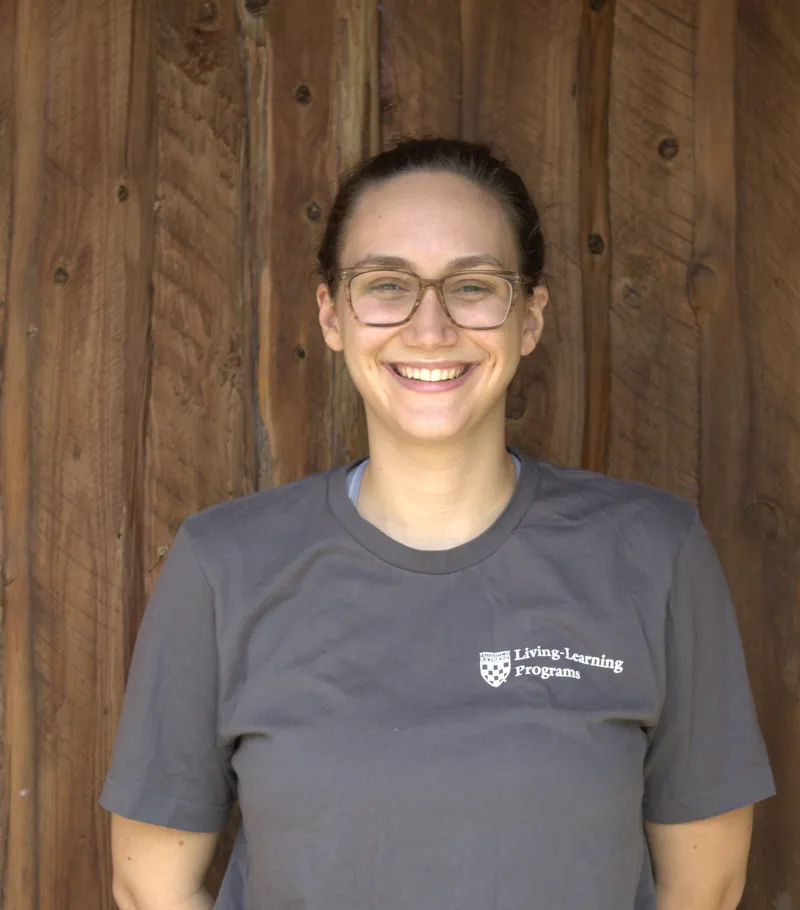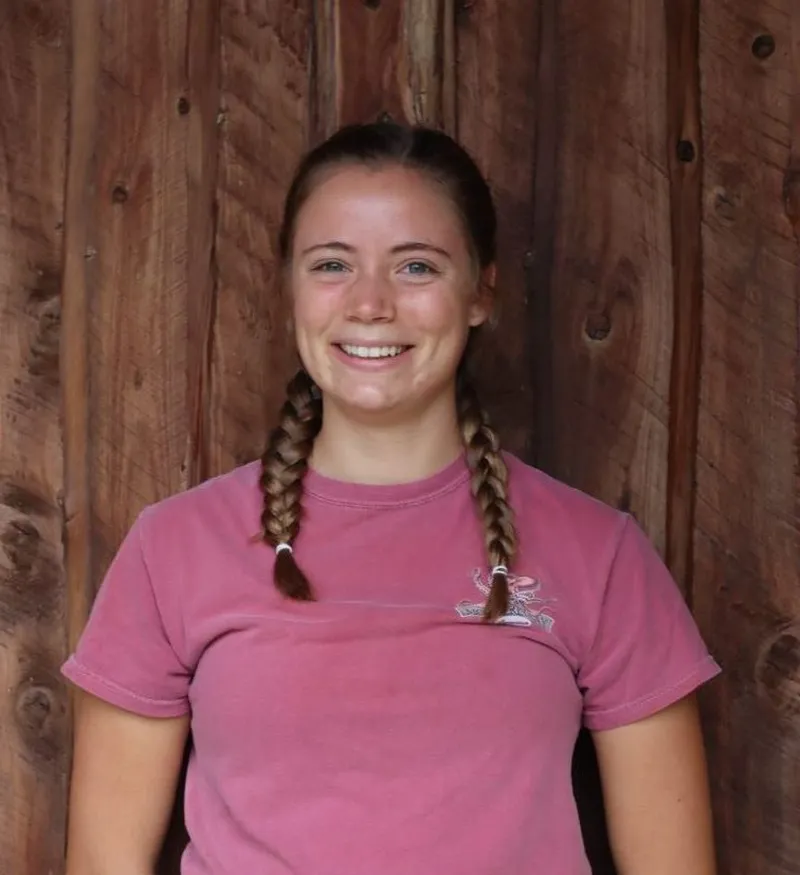Alumni Reflections: Stories of the Return to Kenya
ELSPETH: PROJECT ORIGINS
I had not been expecting the wave of familiarity that hit me when landing in Nairobi, Kenya. It was small things, like the Safaricom stand (a popular cellular data company) or the 5 people who repeatedly offered me a taxi. As we weaved around the long-haul truckers on the Nairobi Highway and finally coasted along in the left lane, I realized how much I had missed Kenya and how much I had never expected to have the means and opportunity to come again. It felt good to be back.

The drive to Kimana from Nairobi. Photo credit: Elspeth Collard.
Joy Oakes and I (Elspeth Collard) were returning to the site of our Fall 2021 SFS program, a small town in southern Kenya called Kimana. We were not university students any longer. In fact, Joy had graduated just two days prior. However, we had been planning this particular trip for months in advance.
Our origin story began with me wondering if I was in the wrong info session (again), assuming the University of Richmond fellowships advisor would tell me the Davis Projects for Peace grant did not allow rising seniors to apply. That moment never came. So, a week later, I drafted an email to my SFS professors asking for advice about my project idea: human-wildlife conflict mitigation. They mentioned predator-deterrent lights, a technology originally invented in 2013 by a Maasai boy, Richard Turere, that had been growing in popularity across Kenya. We then began planning for a project that would adapt these lights to the Amboseli region (where SFS is based). Two months later, Joy and I were writing an 11-page application (embarrassingly, I believe the limit was five pages), pulling out papers and lectures from our SFS program that felt like old friends. Despite the egregious length of our application, we were chosen as finalists and proceeded to write an additional application, drastically revise our budget multiple times, and exchange countless emails with SFS and our other local partner, Born Free.
Weeks later, we received the news that our project proposal was chosen for funding! Joy and I FaceTimed each other to shriek and dopily grin together while she was running to her next class. The next day I sent her a text that took up three lengths of her phone screen. We began planning with new veracity. We met with Born Free multiple times, coordinating across three time zones with Joy rolling out of bed at 5 am to make it work. We found a lights distributor. He could only call me when he had service, so I ducked out of class multiple times to whisper him questions in the hallway while he yelled answers over the motor of his Land Rover. I would return to my lectures laughing to myself about how absurd and extraordinary the entire situation was.
With renewed dedication to the budget, we asked for discounts, covered costs, and negotiated as much as possible to maximize the number of lights we could order. Joy applied for and was awarded the Krista Colleagues Grant at Gonzaga University and also crowdsourced additional funding. Our budget was looking more and more encouraging. I remember shutting my laptop on the final version and immediately crawling into bed, mentally fist-pumping as I faded off.
Other milestones flew by, booking flights, drafting, and signing a Memorandum of Understanding with Born Free, and applying for visas. To keep us on our toes, Joy’s visa was denied up until a week before our departure. However, this was immediately resolved after she WhatsApped the visa office rather than the numerous calls she had placed. I laughed, albeit hysterically, about this. Later.
So, this was how I found myself on a flight to Nairobi with 2 field outfits, toiletries, and a bag of peanut M&Ms for Okello, the SFS Kenya Center Director.
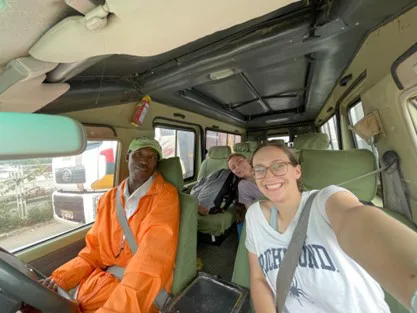
Excited about our arrival in Nairobi! Photo credit: Elspeth Collard.
I wrote this post to illustrate the somewhat demanding, often comedic, and incredibly rewarding process of applying for a grant and planning a project that will be implemented internationally while still in the United States. I would do it all over again to be able to complete the project that Joy and I have. We were so motivated to make the project a reality because of our experiences with SFS and the support they offered us through the process. Joy and I never thought we would make it back to Kenya, but there we were, hitting 80 kph on the Nairobi Highway, excited to start.
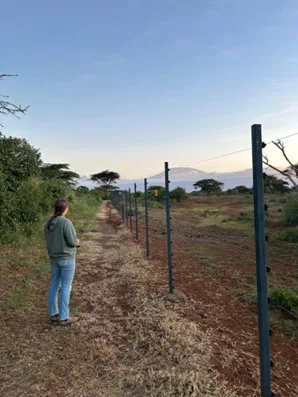
The views of Mt. Kilimanjaro from the SFS Kenya site on our first night back. Photo credit: Elspeth Collard.
JOY: PROJECT IMPLEMENTATION
I’m typically a heavy sleeper, out within seconds of hitting the pillow, but I was too nervous to sleep. Months of planning, emails, Zoom calls, and meetings in-person in Kenya had led up to this moment. The following day we (Elspeth Collard and myself, Joy Oakes) would be attending the community meeting that marked the official start of our project. Just a few days prior, we had chosen, guided by the local knowledge of Born Free, to implement the project in a specific Maasai community in Olgulului due to their vulnerability to human-wildlife conflict and the lack of support they had been given to combat this issue. At this meeting, all of our prior planning was about to be put to the test. It was exciting and nerve-racking to know that we would be meeting our most important collaborators the next day.
Eventually, after exhaustion and some remaining jet lag kicked in, I fell asleep.
We were picked up early the following morning by Stephen Melubo, Born Free’s community engagement officer. Our commute was a contradiction. Every other person we saw motioned for us to stop so that they could have a brief exchange with Stephen in Maa (the Maasai language). Nevertheless, he made up for it with his efficiency between these pauses. He navigated bumpy backroads, the “shortcut,” at speeds I had not known were possible. I soon began referring to the drive as the 90-minute version of Mr. Toad’s Wild Ride. Not only would we have gotten nowhere without him, but Stephen also provided translation, organized logistics, coordinated with boma owners, and guided us through important aspects of Maasai culture. He was the reason we knew that upon our arrival at the meeting place, the boma (homestead) of the village leader, we were to shake each person’s hand individually. The community members’ enthusiastic, rapid-fire greetings in Maa, Swahili, and English (“Taquena” “Supa” “Jambo” “Hello”) had us tripping over ourselves. People’s kind-hearted chuckling at our confusion helped to break the ice.
Almost just as importantly, Stephen also taught us an important technique: the swat and chug. Before the meeting started, we were invited to share some chai (tea) with the village leader. Sitting in colorful plastic chairs, we learned swatting the air above your mug and chugging chai in between those swats was the only way to out-compete the many flies also interested in some hot chai. I am proud to say that we held our own, and I only had to spit out a fly on one occasion (ack!).
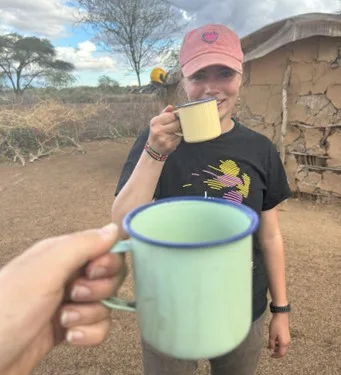
Enjoying one of the many cups of chai! Photo credit: Elspeth Collard.
Within a few minutes of the meeting’s beginning, my nerves had calmed. The warm welcome of the community was evident. Several people spoke to express excitement, interest, and gratitude for the predator-deterrent lights. The best part was the many questions we got about the lights, which, to me, showed the community’s investment in our idea. The selection of bomas to receive the lights also went smoothly and at the end of the meeting, the mommas (Maasai women) surprised us with a song and dance to bless us. During the ceremony, they gifted us with beautifully beaded necklaces and invited us to dance with them. The minute we rose from our chairs, cameras came out everywhere. I bet you can find us on a Maasai Facebook page, laughing with the mommas as we attempt to dance.
A week after the meeting, we began a whirlwind three days of installation, visiting 19 bomas and installing 178 lights. Our installation team rocked. Over just a few days we were transformed from a silent car of strangers to a squad bonded by a love of Rihanna and the shared experience of squishing 10 of us (and all of our supplies) into a 5-seater car.

The team in the car! Photo credit: Elspeth Collard.
At each boma, our installation process was that the technicians would first drive the metal poles into the ground using “the slammer” (a fire-extinguisher cut in half welded to a car gear). Elspeth and I would follow behind, setting up the lights, usually with the help of the boma owners. While we were attaching lights, the owners would point to a spot just outside their outer fence and tell us, “this is where we heard seven lions last night” or gesture to their gate, saying, “this is where the hyenas came in last week.” After spending so much time learning about human-wildlife conflict from an academic perspective, it was impactful to hear these unprompted stories from so many community members and witness the burdens pastoralists carry, such as staying up most nights to guard livestock.
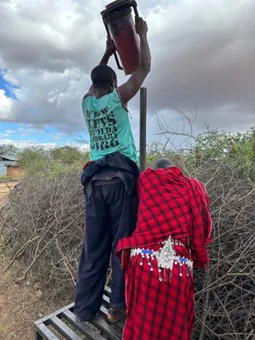
The pole slammer in action! Photo credit: Elspeth Collard.
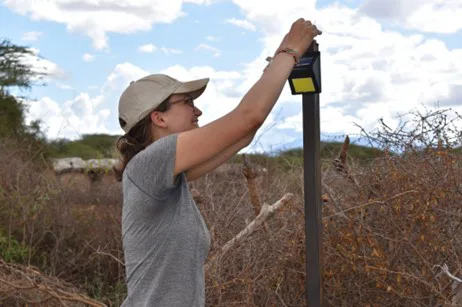
Elspeth setting up a PDL. Photo credit: David Manoa
One of the greatest joys of the project for me was the welcome and kindness of the Maasai community. After installation, every boma offered us hot chai or fresh milk, and we were frequently served lunch. Sometimes we would chat with people at the boma for more time than we spent installing the lights. I’m appreciative of the times we slowed down, shared some chai, and connected.
After all of the installations were complete, Elspeth and I dove into the rest of the tasks necessary to wrap up the project. We analyzed demographic and predation incidence data collected from each boma; wrote reports; met with other local organizations about our project; and did a panel about our grant with current SFS Kenya summer students.
Ultimately, every aspect of this project, from planning to installation and reports, has been uniquely challenging and fulfilling. It would not have been possible without the help of many individuals and organizations. Our thank you list is long: the Maasai community members we worked with, Born Free, SFS faculty and staff, the University of Richmond Fellowships Office, the Born Free installation crew, our donors, and so many others. In the end, we are so grateful to have a community that believed in us, offered to help before we had even finished our pitch, and made this spark of an idea into a reality.
Contact
Elspeth Collard elspethcollard@gmail.com
Joy Oakes joakes@zagmail.gonzaga.edu
Related Posts


Alumni Reflections: Stories of the Return to Kenya

